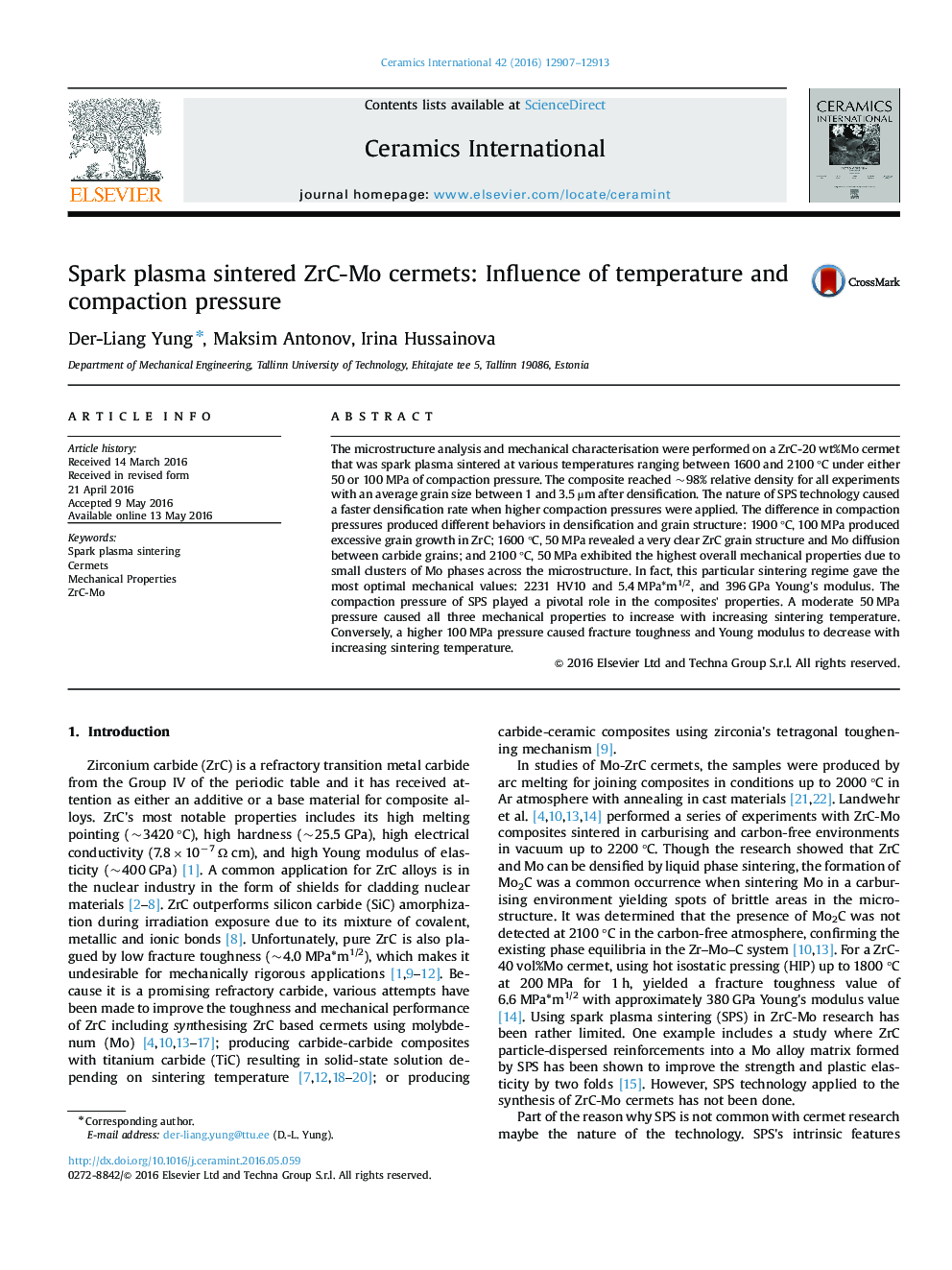| Article ID | Journal | Published Year | Pages | File Type |
|---|---|---|---|---|
| 1458738 | Ceramics International | 2016 | 7 Pages |
The microstructure analysis and mechanical characterisation were performed on a ZrC-20 wt%Mo cermet that was spark plasma sintered at various temperatures ranging between 1600 and 2100 °C under either 50 or 100 MPa of compaction pressure. The composite reached ~98% relative density for all experiments with an average grain size between 1 and 3.5 µm after densification. The nature of SPS technology caused a faster densification rate when higher compaction pressures were applied. The difference in compaction pressures produced different behaviors in densification and grain structure: 1900 °C, 100 MPa produced excessive grain growth in ZrC; 1600 °C, 50 MPa revealed a very clear ZrC grain structure and Mo diffusion between carbide grains; and 2100 °C, 50 MPa exhibited the highest overall mechanical properties due to small clusters of Mo phases across the microstructure. In fact, this particular sintering regime gave the most optimal mechanical values: 2231 HV10 and 5.4 MPa*m1/2, and 396 GPa Young's modulus. The compaction pressure of SPS played a pivotal role in the composites’ properties. A moderate 50 MPa pressure caused all three mechanical properties to increase with increasing sintering temperature. Conversely, a higher 100 MPa pressure caused fracture toughness and Young modulus to decrease with increasing sintering temperature.
